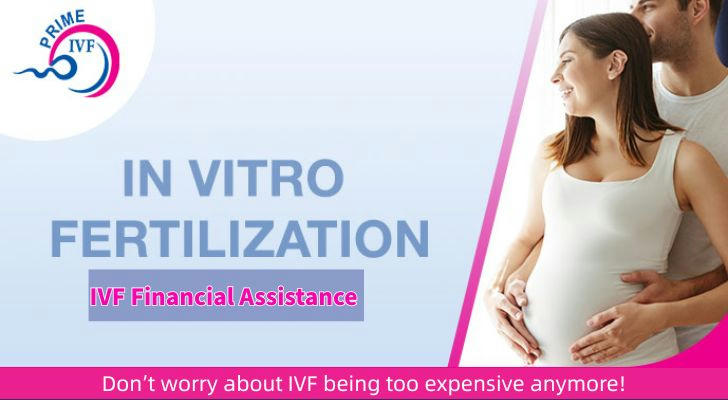IVF Too Expensive? These Grants and Cost-Saving Tips Can Help You Build Your Family!
In-vitro fertilization (IVF) can be financially overwhelming for many families. Fortunately, numerous U.S. nonprofit organizations offer grants and support programs to ease the financial burden and help you realize your dream of having a child.

💰 Where Can You Get IVF Financial Assistance?
Here are some well-known nonprofit organizations that offer IVF grants:
Tinina Q. Cade Foundation (Family Building Grant)
Provides up to $10,000 in financial support for IVF treatment or adoption for couples struggling with infertility.
AGC Scholarship Foundation
Offers fertility treatment grants to couples facing financial hardship who dream of becoming parents.
Baby Quest Foundation
Supports individuals and couples who cannot afford treatments like IUI, IVF, egg donation.
The Family Formation Charitable Trust
Offers grants ranging from $500 to $2,000 to support adoption-related expenses.
Journey to Parenthood
Grants up to $10,000 to individuals and couples with infertility, along with emotional support, education, and resources.
Angels of Hope Foundation
While mainly focused on families affected by cancer, some funding may support cancer-related fertility treatment.
👨👩👧 Who Is Eligible?
- U.S. citizens or green card holders
- Diagnosed with infertility and preparing for or undergoing treatment
- Must provide financial documentation to demonstrate need
- Required documents: medical diagnosis, treatment plan, tax records, and income proof
- Some programs charge a small application fee (e.g., Cade Foundation: $50)
🏥 Choosing the Right IVF Clinic
Well-known U.S. fertility clinics include:
- Shady Grove Fertility
- CCRM (Colorado Center for Reproductive Medicine)
- Boston IVF
Many clinics work with grant organizations and support payment through these programs. Always check with your local clinic about supported partnerships before applying.
❓ Frequently Asked Questions (FAQ)
Q1: What are the chances of being approved?
A: Grants are limited and competitive. Strong documentation and personal stories can improve your chances.
Q2: How long does the process take?
A: Most foundations have 1–2 application cycles per year, with results typically within 1–2 months.
Q3: How is the grant money used?
A: Funds are usually sent directly to your treatment clinic, not to individuals.
Q4: Do grants cover medication?
A: Some (e.g., Cade Foundation) include medication support. Check the specific program’s details.
Q5: Are there age or health restrictions?
A: While most grants don’t set strict age limits, some prefer applicants under 40.
🛠️ Tips for a Successful Application
- Be Prepared: Get your medical diagnosis and treatment plan in advance
- Tell Your Story: Share your fertility journey with honesty and emotion
- Submit Complete Financial Info: Include tax returns, pay stubs, or benefits statements
- Watch the Deadlines: Applications often have narrow submission windows
- Apply to Multiple Programs: This improves your chances of success
💡 More Ways to Lower IVF Costs (Including Fertility Preservation & Military Discounts)
1. Fertility Preservation Programs
Designed for patients facing cancer or other illnesses:
- Banking on the Future, PACT Grant, Sharing Hope Program
- Verna’s Purse: Long-term storage discounts in specific states
2. Military and Veteran Benefits
- EMD Serono Compassionate Corps: Discounted fertility medications
- Shady Grove Fertility: 25% IVF discount for active-duty military
- TRICARE: Covers certain IVF services for military families
3. Crowdfunding & Budgeting Tips
- Use GoFundMe or Facebook Fundraisers for IVF-related donations
- Cut unnecessary expenses to save faster
- Check if your employer (e.g., Amazon, Starbucks, Apple) offers fertility insurance
❤️ Emotional Support Matters
IVF can be emotionally taxing. Seek counseling or join peer support groups to reduce stress. Some foundations also provide mental health support resources.
🌟 Real Story: Miesha & Jon’s IVF Journey
Miesha and Jon from Michigan struggled with infertility for years and felt hopeless due to the high cost. After receiving a $10,000 grant from the Cade Foundation, they successfully completed IVF and welcomed a healthy baby. Miesha shared, “The foundation lifted our financial burden and gave us real hope.”
✅ Final Thoughts
IVF grants may be competitive, but they’re worth the effort. With the right documents, an authentic story, and smart use of cost-saving programs, you can get closer to your goal. We hope this guide helps you take that first step toward growing your family.
